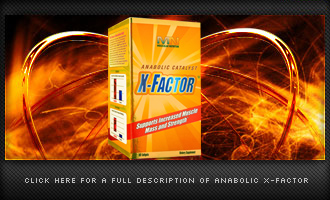Inflammation (Latin, inflammatio, to set on fire) is the complex biological response of vascular tissues to harmful stimuli, such as pathogens, damaged cells, or irritants. It is a protective attempt by the organism to remove the injurious stimuli as well as initiate the healing process for the tissue. Inflammation is not a synonym for infection. Even in cases where inflammation is caused by infection it is incorrect to use the terms as synonyms: infection is caused by an exogenous pathogen, while inflammation is the response of the organism to the pathogen.
In the absence of inflammation, wounds and infections would never heal and progressive destruction of the tissue would compromise the survival of the organism. However, inflammation which runs unchecked can also lead to a host of diseases, such as hay fever, atherosclerosis, and rheumatoid arthritis. It is for this reason that inflammation is normally tightly regulated by the body.
Inflammation can be classified as either acute or chronic. Acute inflammation is the initial response of the body to harmful stimuli and is achieved by the increased movement of plasma and leukocytes from the blood into the injured tissues. A cascade of biochemical events propagates and matures the inflammatory response, involving the local vascular system, the immune system, and various cells within the injured tissue. Prolonged inflammation, known as chronic inflammation, leads to a progressive shift in the type of cells which are present at the site of inflammation and is characterised by simultaneous destruction and healing of the tissue from the inflammatory process.
Acute Inflammation
Acute inflammation is a short-term process which is characterised by the classic signs of inflammation - swelling, redness, pain, heat, and loss of function - due to the infiltration of the tissues by plasma and leukocytes. It occurs as long as the injurious stimulus is present and ceases once the stimulus has been removed, broken down, or walled off by scarring (fibrosis). The first four characteristics have been known since ancient times and are attributed to Celsus. Loss of function was added to the definition of inflammation by Rudolf Virchow in the 19th century[1].
The process of acute inflammation is initiated by the blood vessels local to the injured tissue, which alter to allow the exudation of plasma proteins and leukocytes into the surrounding tissue. The increased flow of fluid into the tissue causes the characteristic swelling associated with inflammation, and the increased blood flow to the area causes the reddened colour and increased heat. The blood vessels also alter to permit the extravasation of leukocytes through the endothelium and basement membrane constituting the blood vessel. Once in the tissue, the cells migrate along a chemotactic gradient to reach the site of injury, where they can attempt to remove the stimulus and repair the tissue.
Meanwhile, several biochemical cascade systems, consisting of chemicals known as plasma-derived inflammatory mediators, act in parallel to propagate and mature the inflammatory response. These include the complement system, coagulation system and fibrinolysis system.
Finally, down-regulation of the inflammatory response concludes acute inflammation. Removal of the injurious stimuli halts the response of the inflammatory mechanisms, which require constant stimulation to propagate the process. Additionally, many inflammatory mediators have short half lives and are quickly degraded in the tissue, helping to quickly cease the inflammatory response once the stimulus has been removed.
Chronic Inflammation
Chronic inflammation is a pathological condition characterised by concurrent active inflammation, tissue destruction, and attempts at repair. Chronic inflammation is not characterised by the classic signs of acute inflammation listed above. Instead, chronically inflammed tissue is characterised by the infiltration of mononuclear immune cells (monocytes, macrophages, lymphocytes, and plasma cells), tissue destruction, and attempts at healing, which include angiogenesis and fibrosis.
Endogenous causes include persistent acute inflammation. Exogenous causes are varied and include bacterial infection, especially by Mycobacterium tuberculosis, prolonged exposure to chemical agents such as silica, or autoimmune reactions such as rheumatoid arthritis.
In acute inflammation, removal of the stimulus halts the recruitment of monocytes (which become macrophages under appropriate activation) into the inflamed tissue, and existing macrophages exit the tissue via lymphatics. However in chronically inflamed tissue the stimulus is persistent, and therefore recruitment of monocytes is maintained, existing macrophages are tethered in place, and proliferation of macrophages is stimulated (especially in atheromatous plaques.)
Vascular Changes
Acute inflammation is characterised by marked vascular changes, including vasodilation, increased permeability, and the slowing of blood flow, which are induced by the actions of various inflammatory mediators. Vasodilation occurs first at the arteriole level, progressing to the capillary level, and brings about a net increase in the amount of blood present, causing the redness and heat of inflammation. Increased permeability of the vessels results in the movement of plasma into the tissues, with resultant stasis due to the increase in the concentration of the cells within blood - a condition characterised by enlarged vessels packed with cells. Stasis allows leukocytes to marginate along the endothelium, a process critical to their recruitment into the tissues. Normal flowing blood prevents this, as the shearing force along the periphery of the vessels moves cells in the blood into the middle of the vessel.
Plasma cascade systems
The complement system, when activated, results in the increased removal of pathogens via opsonisation and phagocytosis.
The kinin system generates proteins capable of sustaining vasodilation and other physical inflammatory effects.
The coagulation system or clotting cascade which forms a protective protein mesh over sites of injury.
The fibrinolysis system, which acts in opposition to the coagulation system, to counterbalance clotting and generate several other inflammatory mediators.
Cellular component
The cellular component involves leukocytes, which normally reside in blood and must move into the inflamed tissue via extravasation to aid in inflammation. Some act as phagocytes, ingesting bacteria, viruses, and cellular debris. Others release enzymatic granules which damage pathogenic invaders. Leukocytes also release inflammatory mediators which develop and maintain the inflammatory response. Generally speaking, acute inflammation is mediated by granulocytes, while chronic inflammation is mediated by mononuclear cells such as monocytes and lymphocytes.
Systemic effects
An organism can escape the confines of the immediate tissue via the circulatory system or lymphatic system, where it may spread to other parts of the body. If an organism is not contained by the actions of acute inflammation it may gain access to the lymphatic system via nearby lymph vessels. An infection of the lymph vessels is known as lymphangitis, and infection of a lymph node is known as lymphadenitis. A pathogen can gain access to the bloodstream through lymphatic drainage into the circularitory system.
When inflammation overwhelms the host, systemic inflammatory response syndrome is diagnosed. When it is due to infection, the term sepsis is applied, with bacteremia being applied specifically for bacterial sepsis and viremia specifically to viral sepsis. Vasodilation and organ dysfunction are serious problems associated with widespread infection that may lead to septic shock and death.
Acute-phase proteins
Inflammation also induces high systemic levels of acute-phase proteins. In acute inflammation, these proteins prove beneficial, however in chronic inflammation they can contribute to amyloidosis. These proteins include C-reactive protein, serum amyloid A, serum amyloid P, vasopressin, and glucocorticoids, which cause a range of systemic effects including:
Fever
Increased blood pressure
Decreased sweating
Malaise
Loss of appetite
Somnolence
Systemic inflammation and obesity
With the discovery of interleukins (IL), the concept of systemic inflammation developed. Although the processes involved are identical to tissue inflammation, systemic inflammation is not confined to a particular tissue but involves the endothelium and other organ systems.
High levels of several inflammation-related markers such as IL-6, IL-8, and TNF-α are associated with obesity. During clinical studies, inflammatory-related molecule levels were reduced and increased levels of anti-inflammatory molecules were seen within four weeks after patients began a very low calorie diet. The association of systemic inflammation with insulin resistance and atherosclerosis is the subject of intense research.
Outcomes
The outcome in a particular circumstance will be determined by the tissue in which the injury has occurred and the injurious agent that is causing it. There are three possible outcomes to inflammation:
Resolution
The complete restoration of the inflamed tissue back to a normal status. Inflammatory measures such as vasodilation, chemical production, and leukocyte infiltration cease, and damaged parenchymal cells regenerate. In situations where limited or short lived inflammation has occurred this is usually the outcome.
Fibrosis
Large amounts of tissue destruction, or damage in tissues unable to regenerate, can not be regenerated completely by the body. Fibrous scarring occurs in these areas of damage, forming a scar composed primarily of collagen. The scar will not contain any specialized structures, such as parenchymal cells, hence functional impairment may occur.
Chronic inflammation
In acute inflammation, if the injurious agent persists then chronic inflammation will ensue. This process, marked by inflammation lasting many days, months or even years, may lead to the formation of a chronic wound. Chronic inflammation is characterised by the dominating presence of macrophages in the injured tissue. These cells are powerful defensive agents of the body, but the toxins they release (including reactive oxygen species) are injurious to the organism's own tissues as well as invading agents. Consequently, chronic inflammation is almost always accompanied by tissue destruction.
Overtraining
Overtraining refers to when a bodybuilder has trained to the point where his workload exceeds his recovery capacity. There are many reasons that overtraining occurs, including lack of adequate nutrition, lack of recovery time between workouts, insufficient sleep, and training at a high intensity for too long (a lack of splitting apart workouts). Training at a high intensity too frequently also stimulates the central nervous system (CNS) and can result in a hyper-adrenergic state that interferes with sleep patterns. To avoid overtraining, intense frequent training must be met with at least an equal amount of purposeful recovery. Timely provision of carbohydrates, proteins, and various micronutrients such as vitamins, minerals, phytochemicals, even nutritional supplements are acutely critical.



